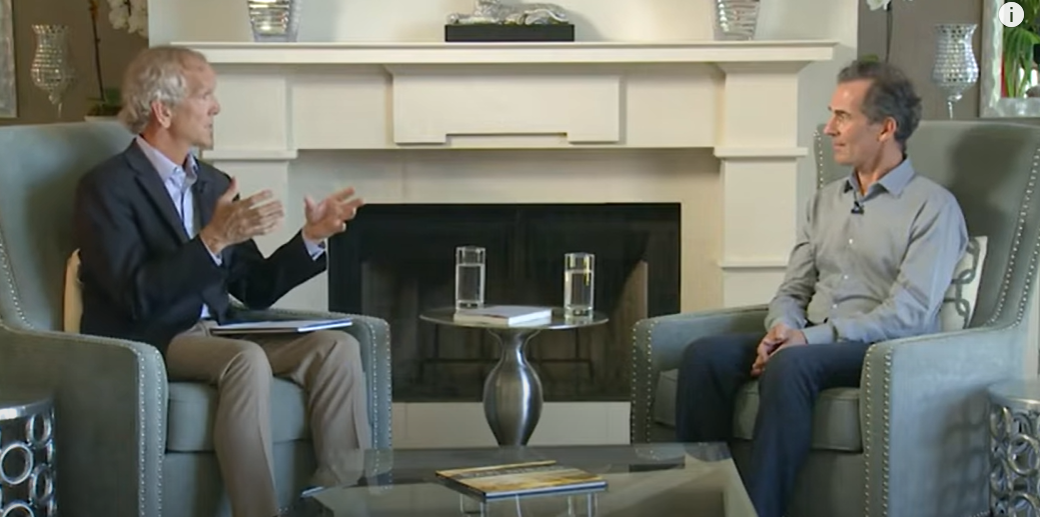The Dance of Stillness: Exploring Non-Duality and Well-Being
In a recent conversation between Rupert Spira, a renowned teacher of non-duality, and Paul J. Mills, a respected medical scientist and professor of family medicine at the University of California, San Diego, we witness a profound exploration of two distinct yet intertwined worldviews. The dialogue is a fascinating “dance” between the metaphysical insights of Advaita (non-duality) and the empirical understanding of well-being through the lens of modern medicine and psychology.
This article delves into the core concepts at play in this discussion, examining how these two approaches—one spiritual and the other scientific—can offer a more holistic understanding of human fulfillment and well-being. I invite you to join this dance of stillness as we explore the essence of non-duality and its relevance to our lives.
The Essence of Non-Duality: Rupert Spira’s Perspective
Rupert Spira's teachings are grounded in Advaita, or non-duality, which holds that there is no fundamental separation between the self and the universe. This perspective goes beyond the common experience of duality—the belief that our minds and the external world are distinct, separate entities. In Spira’s worldview, this division is illusory. At the core of existence is a singular, indivisible reality where the apparent distinctions between mind and matter, self and world, dissolve into pure awareness.
Spira’s central premise is that true well-being and fulfillment are not found in external conditions, relationships, or achievements but in the recognition of our essential nature. This nature, which he refers to as “pure awareness,” is ever-present, unchanging, and unaffected by the ups and downs of life. Spira illustrates this with the analogy of a dream: just as the dreamer’s mind contains both the internal thoughts and the external world of the dream, our waking experience, too, is a manifestation of the same underlying awareness.
This concept of non-duality leads to a radical rethinking of what it means to experience love, beauty, and happiness. According to Spira, when we fall in love or are captivated by beauty, the boundaries between self and other dissolve, allowing us to experience the inherent oneness of existence. In this state of unity, we transcend the ego’s limitations and tap into a deeper, more enduring sense of peace.
The Scientific Lens: Paul J. Mills’ Approach to Well-Being
In contrast, Paul J. Mills represents a more traditional, scientific perspective on well-being. As a medical scientist, Mills has spent much of his career researching the impacts of stress, anxiety, and depression on physical and mental health. Over the years, his field has expanded to include the positive aspects of psychology, such as gratitude, compassion, and empathy, which are increasingly recognized as essential components of well-being.
Mills shares insights from the Gallup Well-Being Index, which identifies five key domains of well-being: sense of purpose, social relationships, financial security, connection to community, and physical health. While acknowledging the importance of these areas in promoting a sense of fulfillment, he also recognizes that something deeper may be missing from the conversation—a more profound understanding of the self and our true nature.
In this dialogue with Spira, Mills explores the possibility of integrating non-dual insights into the scientific understanding of well-being. While traditional medical and psychological frameworks often focus on improving external conditions, Mills is open to Spira’s perspective that true fulfillment is an inner state, independent of life’s circumstances. This opens the door for a broader, more holistic understanding of what it means to be well.
The Dance Between Science and Spirituality
The conversation between Spira and Mills reveals an elegant interplay between their differing worldviews, with each offering something valuable to the other. Spira’s metaphysical understanding of well-being challenges Mills’ more empirical approach, suggesting that true happiness lies not in external achievements but in realizing one’s inherent, indivisible nature. In contrast, Mills grounds the conversation in the scientific and practical aspects of human well-being, such as physical health and social relationships, emphasizing their undeniable importance in our day-to-day lives.
Despite these apparent differences, the two perspectives are not at odds. Instead, they complement one another, weaving together a more comprehensive understanding of well-being. Spira’s teachings offer a path to inner peace and fulfillment through self-realization, while Mills’ approach emphasizes the importance of fostering positive relationships, purpose, and physical health. Together, they provide a roadmap for navigating both the internal and external dimensions of human experience.
The “dance” between these two thinkers is a reflection of the broader dance between science and spirituality. While science helps us understand the material aspects of life, spirituality invites us to go beyond the material and discover the stillness at the heart of our being. By embracing both perspectives, we can cultivate a more complete sense of well-being—one that honors both the body and the spirit.
Conclusion: Embracing Stillness in the Dance of Life
In the end, the dialogue between Rupert Spira and Paul J. Mills reminds us that well-being is not a static state but an ongoing dance. It requires both an understanding of our inner nature and an engagement with the world around us. By integrating the insights of non-duality with the practical tools of science, we can learn to live with greater peace, joy, and resilience.
As we navigate the complexities of life, let us remember that true fulfillment is not something to be achieved but something to be recognized within ourselves. The dance of stillness invites us to let go of the search for external validation and discover the infinite presence of awareness that lies at the core of who we are.
For those interested in diving deeper into this conversation, I’ve included the video of the full talk and its transcript below. May this exploration inspire you on your journey toward lasting well-being and inner peace.
Watch the Full Conversation:
Non-Duality and the Nature of Experience with Rupert Spira and Paul J. Mills
